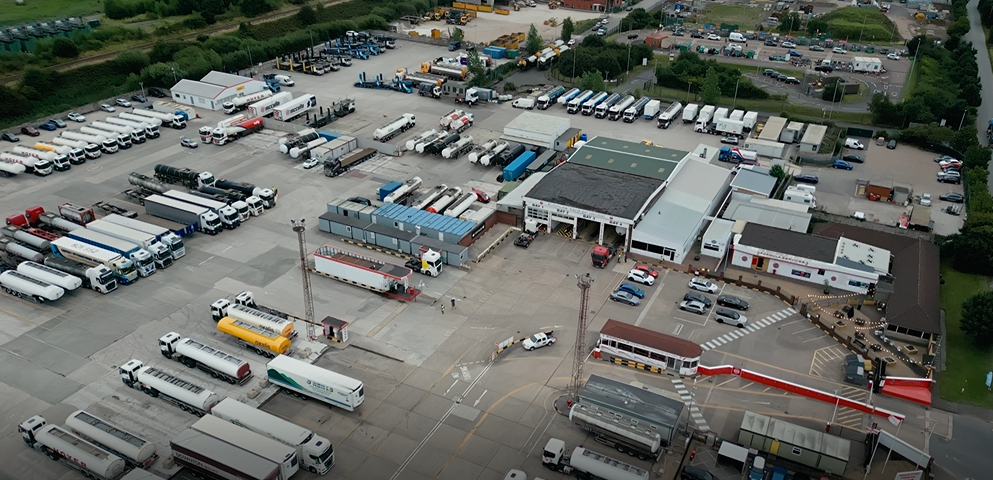
Miranda Blake
Direttiva sull'orario di lavoro degli autisti: Una guida per gli autisti di camion
Creato: 25/10/2024
•
Aggiornato: 29/10/2024
In qualità di autista di camion nel Regno Unito, è fondamentale conoscere bene le complesse norme che regolano gli orari di lavoro e i periodi di riposo dei conducenti. La Direttiva sull'orario di lavoro dei conducenti (WTD), nota anche come Direttiva sul trasporto stradale, è un insieme di norme che regola le ore massime di lavoro di un conducente, le pause obbligatorie e i periodi di riposo da rispettare. La mancata osservanza di queste norme può comportare multe salate e persino il fermo del veicolo.
Comprendere la direttiva sull'orario di lavoro dei conducenti
La Direttiva sull'orario di lavoro dei conducenti è una normativa dell'Unione Europea che mira a garantire la sicurezza di tutti gli utenti della strada prevenendo gli incidenti dovuti alla stanchezza. Le regole sull'orario di guida si applicano a coloro che guidano veicoli di peso superiore a 3,5 tonnellate, indipendentemente dal fatto che l'individuo operi nel Regno Unito o nell'UE.
Limiti di guida giornalieri
In base al WTD, gli autisti di camion nel Regno Unito sono soggetti a un limite giornaliero di 9 ore di guida, che può essere aumentato a 10 ore al massimo due volte a settimana. Dopo 4,5 ore di guida continua o intermittente, gli autisti devono fare una pausa di almeno 45 minuti. In alternativa, possono optare per una pausa frazionata, in cui la prima è di almeno 15 minuti, seguita da una seconda di almeno 30 minuti.
Restrizioni alla guida settimanali e quindicinali
Il limite settimanale di guida per gli autisti di camion nel Regno Unito è di 56 ore, mentre il limite quindicinale è di 90 ore. Ciò significa che, se un autista raggiunge le 56 ore in una settimana, la settimana successiva può lavorare solo per 34 ore, per evitare di superare il limite di 90 ore a settimana.
Cappellini per l'orario di lavoro
Oltre alle restrizioni sui tempi di guida, la WTD impone anche dei limiti al numero totale di ore che un conducente può lavorare a settimana. La media dell'orario di lavoro settimanale, comprensiva delle mansioni di guida e non, non deve superare le 48 ore, calcolate su un periodo di riferimento di 17 o 26 settimane. L'orario di lavoro massimo in una singola settimana è di 60 ore, purché non venga superata la media di 48 ore.
Periodi di riposo
La WTD impone ai conducenti di mezzi pesanti un periodo di riposo giornaliero di almeno 11 ore consecutive, che può essere suddiviso in due periodi di cui il primo di almeno 3 ore. I conducenti possono anche optare per un periodo di riposo giornaliero ridotto di nove ore, ma questo può essere fatto solo fino a tre volte alla settimana. Inoltre, è obbligatorio un periodo di riposo settimanale di almeno 45 ore, anche se può essere ridotto a 24 ore una volta in un periodo di 2 settimane.

Esenzioni
Sebbene la direttiva sull'orario di lavoro si applichi alla maggior parte degli autotrasportatori del Regno Unito, esistono alcune eccezioni che possono essere applicate in circostanze specifiche. Ad esempio, coloro che non guidano più di 10 volte in un periodo di 26 settimane o 15 volte in un arco di tempo superiore a 26 settimane possono non essere tenuti a monitorare la direttiva sull'orario di lavoro.
Conseguenze della non conformità
La mancata osservanza del WTD può avere gravi conseguenze sia per i conducenti che per [gli operatori di flotta] (https://snapacc.com/fleet-operators/). I conducenti sorpresi a violare le norme possono incorrere in multe fino a 1.500 sterline e, se infrangono le regole per più di 5 volte in 28 giorni, possono essere portati in tribunale e subire il fermo del veicolo.
Per gli operatori di flotte, l'onere di mantenere la conformità in tutta la flotta. Se si trascura di implementare misure sufficienti per il monitoraggio e l'applicazione del WTD, la DVSA può emettere un avviso di miglioramento e, in casi estremi, l'obbligo di cessare l'attività fino alla risoluzione dei problemi.
Importanza delle soluzioni di gestione della flotta integrate con il tachigrafo
Per gestire efficacemente l'orario di lavoro dei conducenti e garantire la conformità alla WTD, gli operatori di flotte dovrebbero considerare di investire in soluzioni di gestione della flotta integrate con il tachigrafo. Queste tecnologie appositamente studiate consentono di monitorare efficacemente il comportamento dei conducenti e di registrare automaticamente i dati relativi agli orari di guida e di lavoro, rendendo praticamente impossibile che la non conformità passi inosservata.
Collaborando con un fornitore di fiducia come SNAP, gli operatori di flotte possono avvalersi di strumenti di gestione della flotta all'avanguardia e accedere a una rete completa di partner di servizio, assicurandosi che i loro conducenti abbiano il supporto necessario per rimanere conformi e sicuri sulla strada.
Impatto della carenza di autisti
C'è anche da considerare la carenza di autisti nel Regno Unito. Si sta rivelando un grosso problema all'interno del settore. Il settore ha registrato un calo di autisti di mezzi pesanti - la pandemia ha ritardato 30.000 esami per i nuovi autisti - e la Brexit ha colpito duramente le aziende di flotte, con molti autisti di camion europei che hanno lasciato il Regno Unito.
Un rapporto 2023 di SNAP suggerisce che il settore potrebbe raggiungere un "punto di svolta" nei prossimi 10-15 anni. Potrebbe rivelarsi che la direttiva sull'orario di lavoro dei conducenti è proprio ciò di cui il settore ha bisogno per rendere la professione di nuovo appetibile e fornire un migliore equilibrio ai conducenti. Per saperne di più su cosa si può fare per affrontare la carenza di autisti leggere il rapporto.



